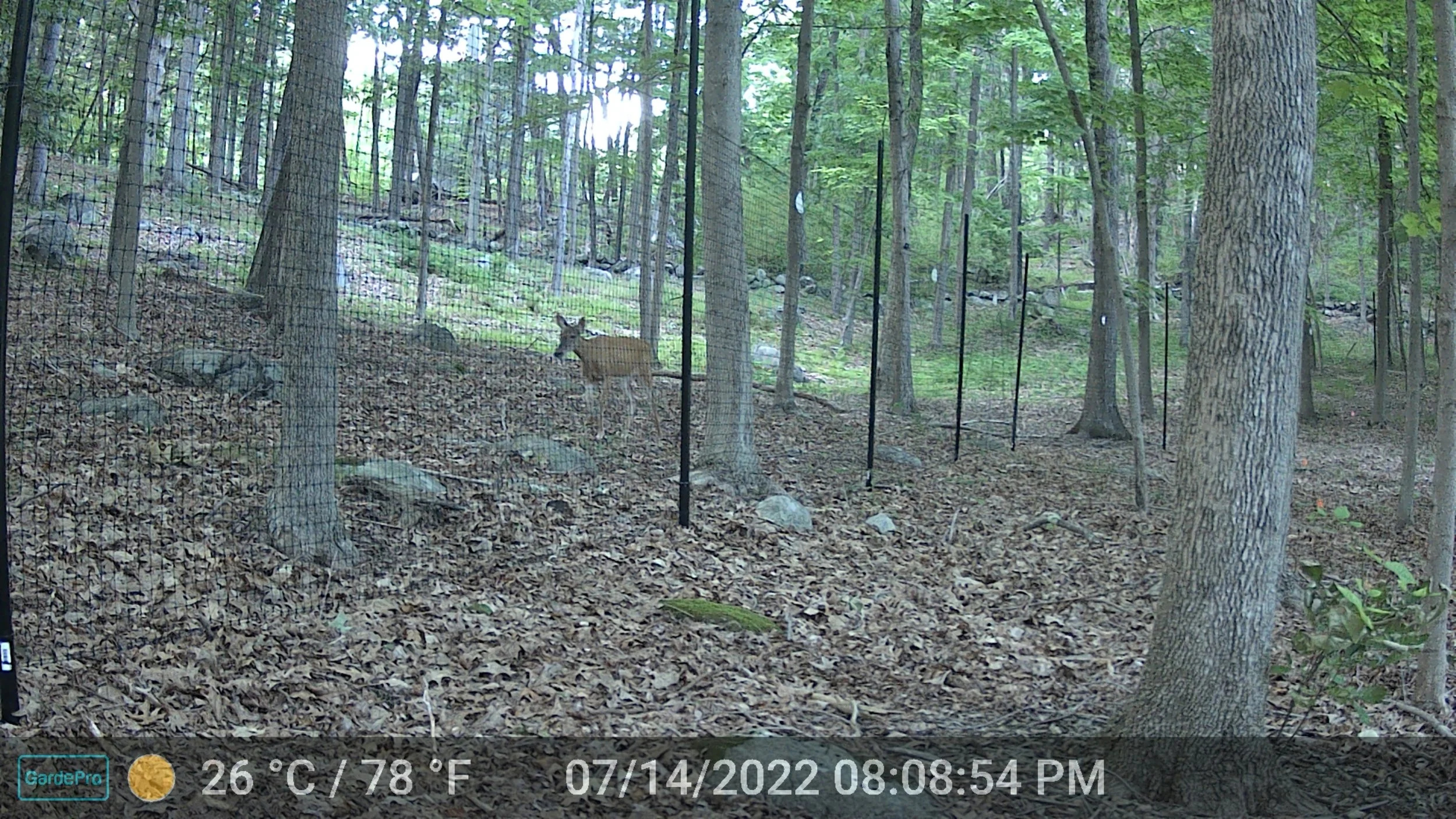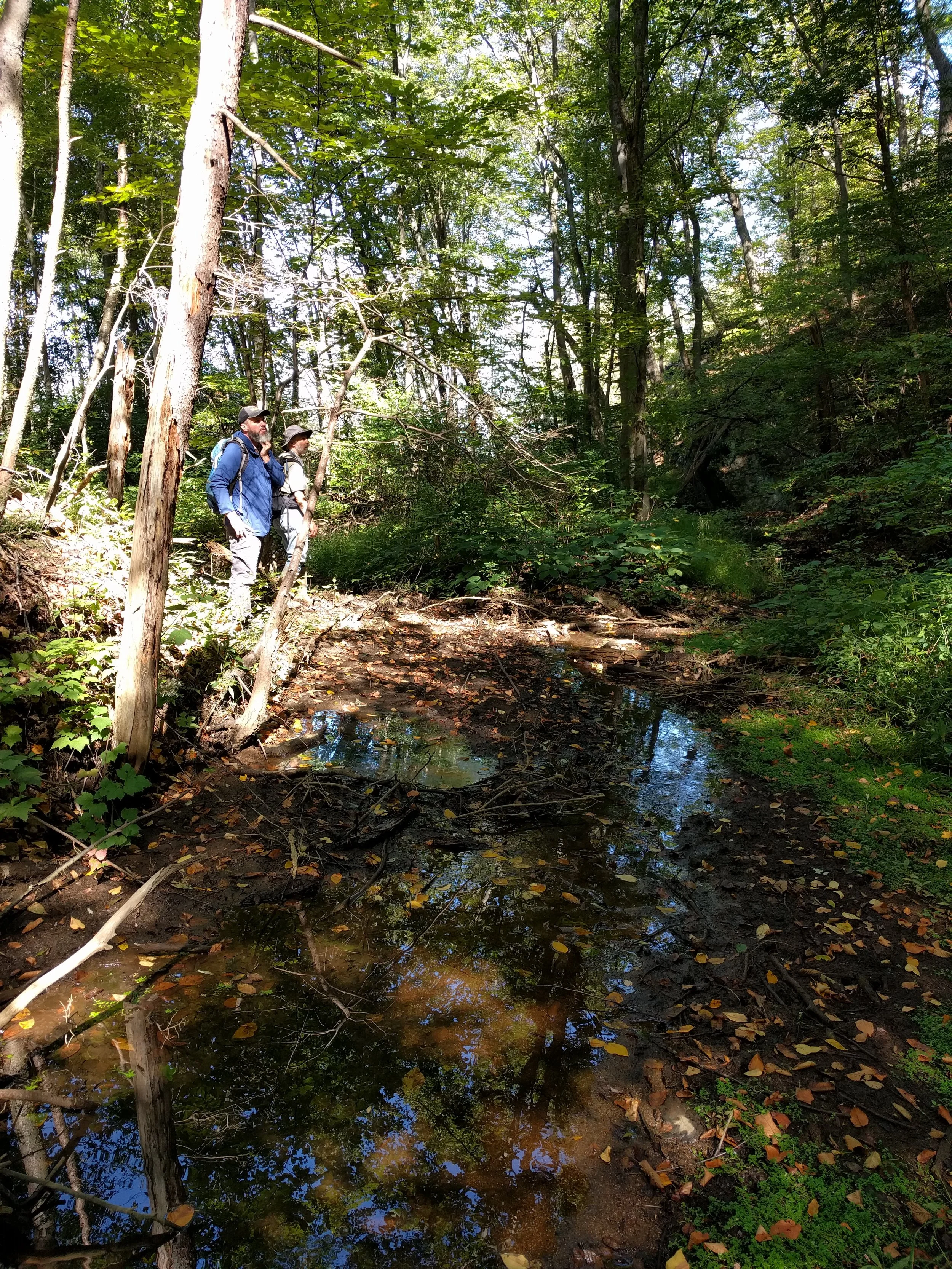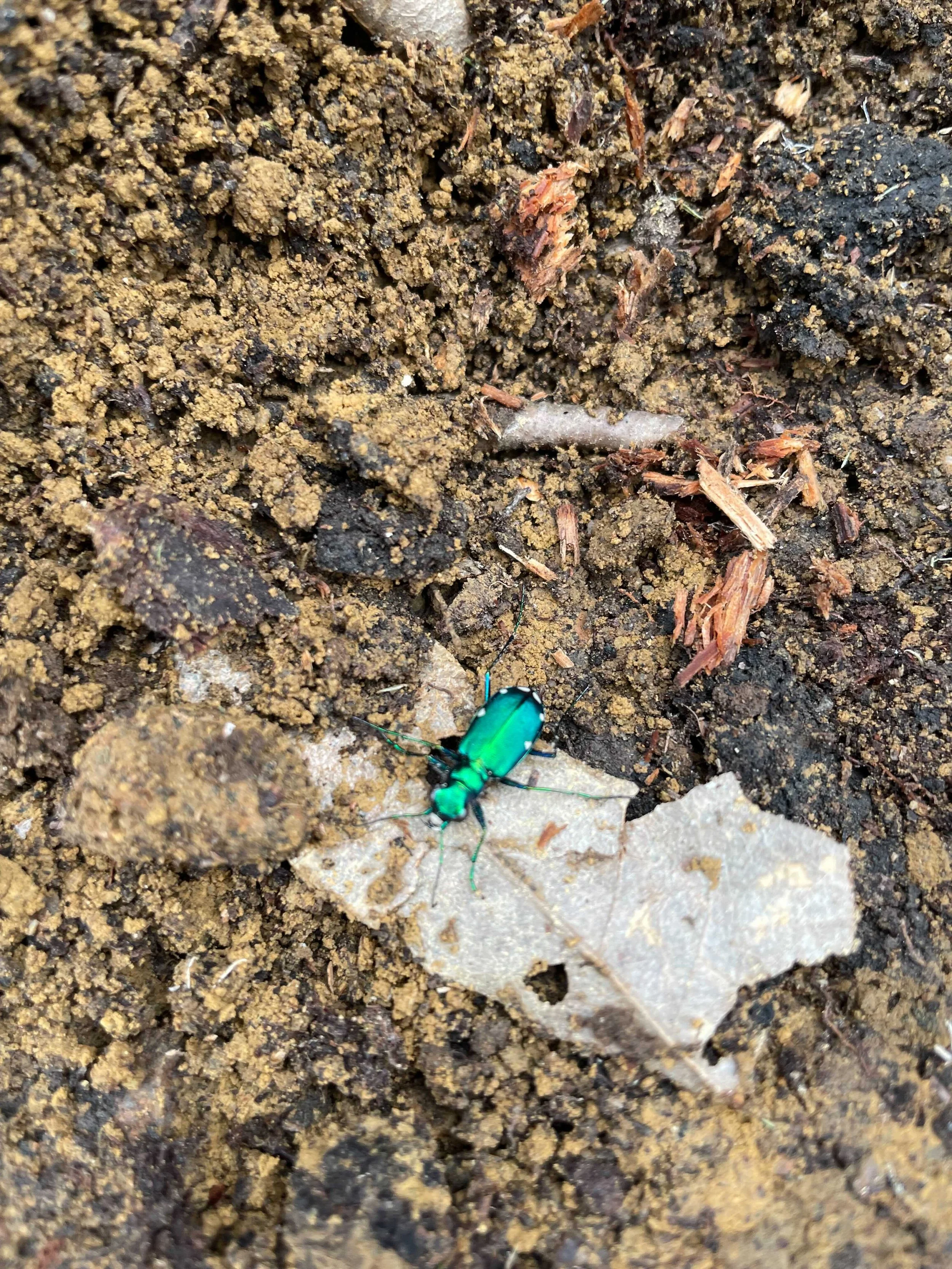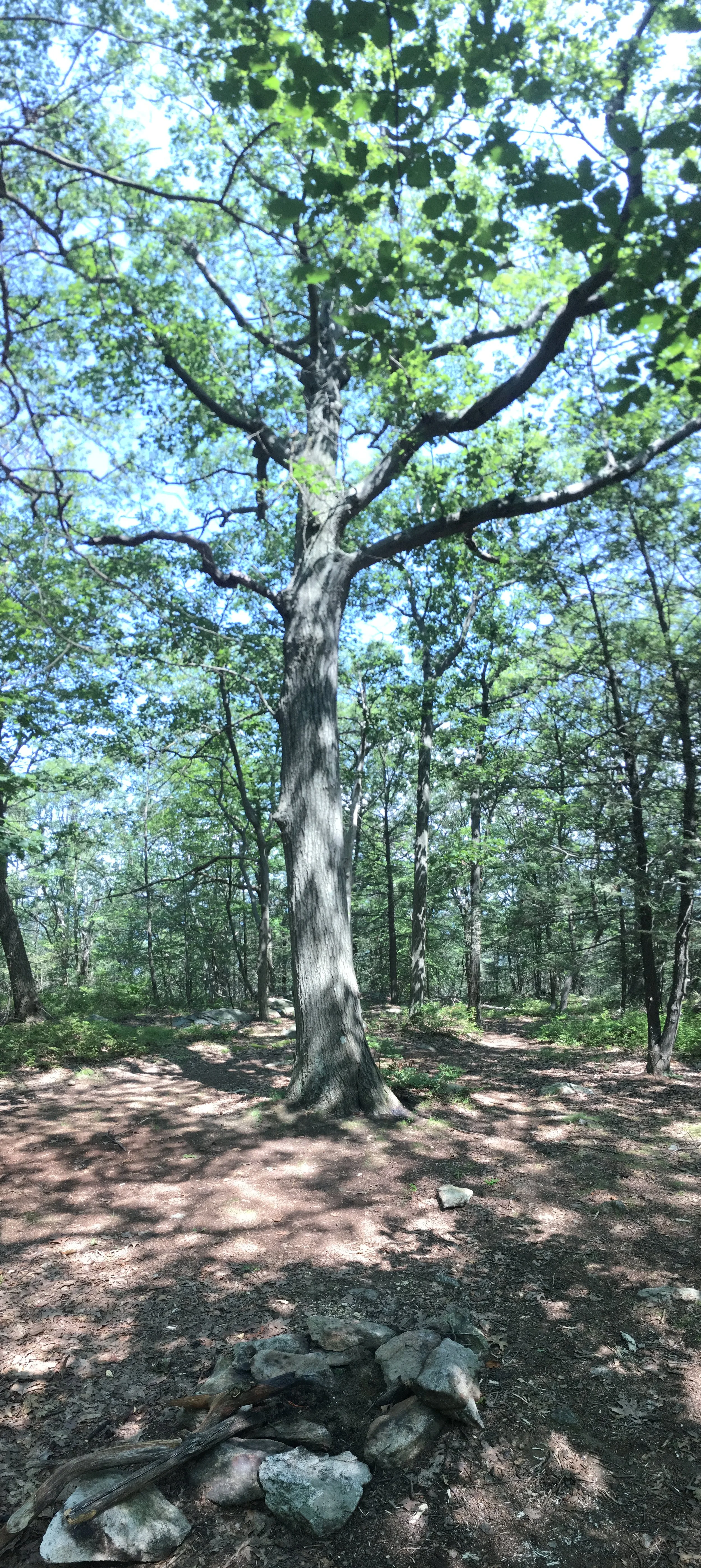Hudson Highlands Forest Restoration
As restoration ecologists, we are keenly attuned to the intricate balances that sustain places like the Hudson Highlands. Not far from New York City, this region unfolds in a series of ecosystems as diverse as they are ancient—bog thickets, oak and hickory forests, cedar swamps, hemlock groves, and pitch pine summits. These are lands that carry the weight of time, places shaped not only by the slow forces of geology but by the rhythm of countless living things. The Highlands remain vital—a sanctuary for rare species like the bog turtle (Clemmys muhlenbergii) and cerulean warbler (Dendroica cerulea), a bridge that connects the fragmented ecologies of the Mid-Atlantic to New England, and a refuge amid the press of human development.
To imagine this land as it was in 1491 is to grasp a world alive with movement and sound. Towering oak, hickory, and hemlock trees stretched across the uplands, their canopies so dense they created an almost cathedral-like dimness. Below, a vibrant understory of shrubs, saplings, and wildflowers flourished. The wetlands shimmered with life—clear streams wound their way through marshes of cattails, sedges, and ferns, their surfaces broken only by the splash of fish or the hum of dragonflies. Beavers worked industriously, their dams creating a patchwork of ponds and meadows that provided shelter for countless creatures, from salamanders to herons. Wolves and cougars roamed these forests, their presence keeping the populations of deer and smaller herbivores in balance. Among all of this, the Lenape people thrived—a culture interwoven with the land. Their approach to land management was deliberate and deeply informed by generations of observation. Through practices such as controlled burns, they maintained open spaces that supported hunting and encouraged the growth of useful plants. Their selective harvesting ensured the continued abundance of food sources, while their spiritual connection to the land fostered a sense of reciprocity with the ecosystems around them. Theirs was a landscape untamed by modern machinery, its rhythms dictated by the sun, the seasons, and the currents of the Hudson River.
But today, this once-boundless vitality is fractured. The removal of predators like the gray wolf (Canis lupus) has left the balance undone, and white-tailed deer (Odocoileus virginianus) now move unchecked through the forests, devouring saplings and shrubs. The understory is vanishing, and with it, the next generation of trees. Invasive species such as Japanese knotweed and Phragmites australis tighten their grip on disturbed lands, choking out native plants. Insects once foreign to these woods now ravage hemlock and ash populations. Development divides habitats into fragments too small to sustain the life that depends on them. And the specter of climate change—its warming air, its shifting rains—threatens to rewrite the rules of survival here altogether.
Faced with this unraveling, we at One Nature initiated a restoration project to help stitch together what remains and to prepare the Highlands for what is to come. The work stretches across diverse habitats—from upland oak forests to tidal marshes, from riparian corridors to lowland wetlands. Each place demands its own understanding, its own response.
Our first steps centered on the deer, whose unchecked appetites had reduced many forests to open parklands, devoid of young trees. We erected a nearly mile-long fence, not as a barrier to life but as a shield for it. Hollow stakes and plastic mesh, reinforced with tension wires, encircle the most vulnerable areas, allowing saplings to rise again. We left corridors open along busy roads, places where animals could pass unimpeded. In wetland areas, we used fencing with wider openings to let smaller creatures move freely. Early observations reveal the beginnings of recovery: young plants pushing up through the soil, a tentative return of the forest’s understory.
Meanwhile, we turned our attention to a degraded aquatic system. What was once an ice pond, filled with sediment and drained of its vibrancy, we envisioned as a place of renewal. A plan was developed to dredge the sediment, carve shallow sill environments along the pond’s edges, and reestablish aquatic vegetation. We recommended the reintroduction of beavers to the surrounding streams—their dams could slow the waters, trap sediments, and breathe complexity back into the flow of the brook. Red Maple trees would anchor the banks, their roots holding the soil steady as the water coursed past. Woody debris, scattered purposefully, would offer shelter to fish, insects, and birds.
The restoration did not stop there. A study of forest ecosystems—spanning floodplain woods, xeric uplands, and hemlock groves—led to the planting of 157 trees from 22 species in 2018. We chose these species with care, guided by climate models that project the Highlands’ future. Already, we’ve seen the success of Juniperus virginiana, Ilex opaca, and Quercus in uplands, while Betula nigra and Pinus echinata thrive in wetter soils. Even those species that struggle contribute to the greater story of resilience, enriching the biodiversity that will buffer these forests against the unknowns of a changing world.
The tidal marshes, too, were part of this vision. Here, rising seas threaten to drown the roots of life itself. Our management plan calls for flood control structures to regulate water levels, for the planting of species that can endure salt and brackish conditions, and for the removal of invaders like Phragmites. These plans await the tools and hands that will make them real, but they rest on a foundation of careful observation and a commitment to restoring what has been lost.
Throughout, this work has been shaped not by any single vision but by collaboration. Scientists, local residents, and conservationists have come together under a framework known as Collaborative Adaptive Management (CAM). CAM is a process that brings together diverse stakeholders to make decisions through iterative learning, monitoring, and adaptation. By pooling knowledge and resources, this team has sought to create a future that honors the past while meeting the challenges of the present.
This project marks the initial phase of a long-term ecological restoration effort, a deliberate process aimed at re-establishing the structural and functional integrity of a landscape where oaks once rose to dominate the canopy and streams sustained vibrant aquatic ecosystems. By employing adaptive management practices and measurable goals, we aim to recover key ecological processes, such as nutrient cycling, hydrological balance, and habitat connectivity, which are essential for sustaining biodiversity. It is a scientifically grounded act of resilience—a recognition that through careful intervention, monitoring, and adjustment, broken systems can be restored to flourish once again.

















